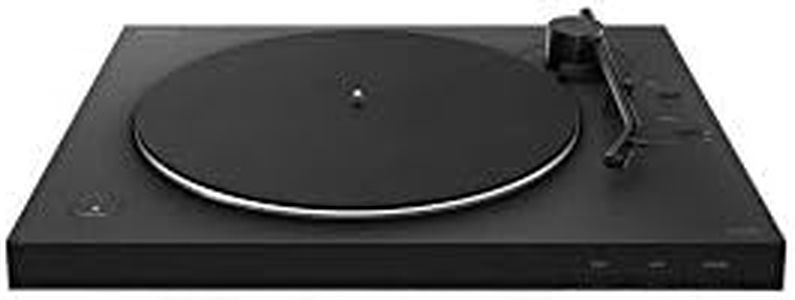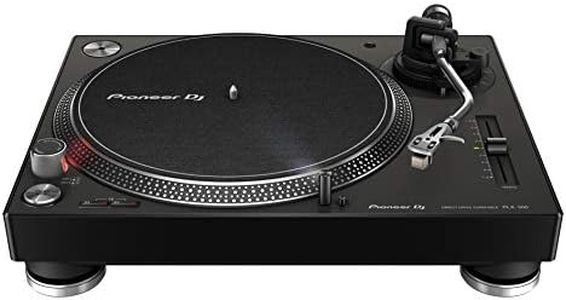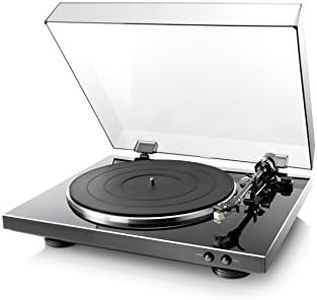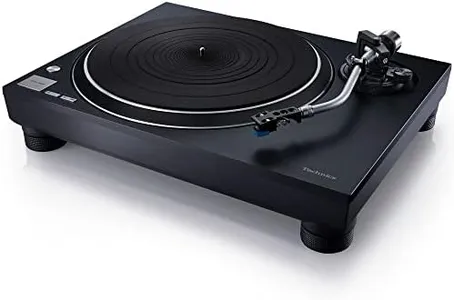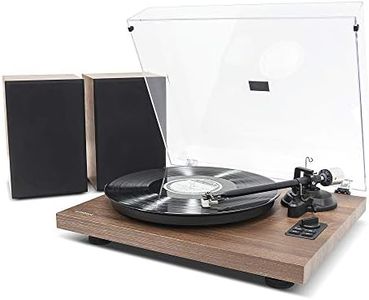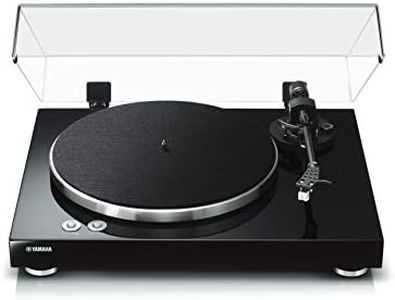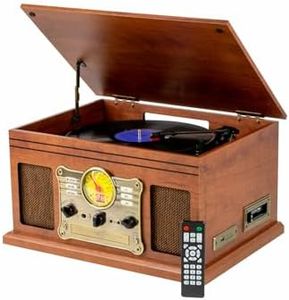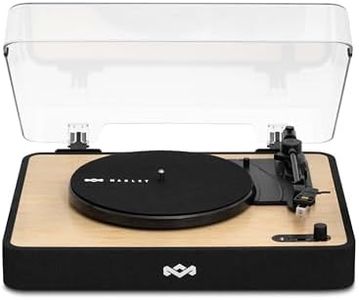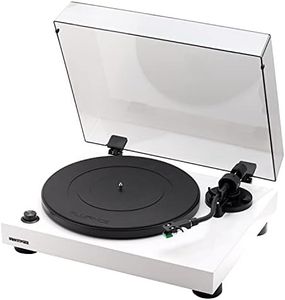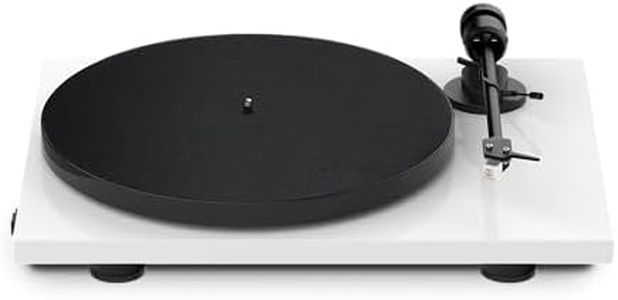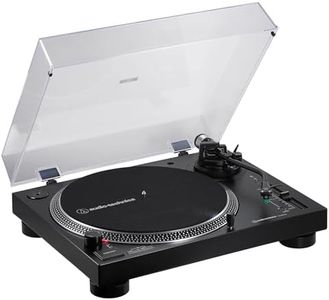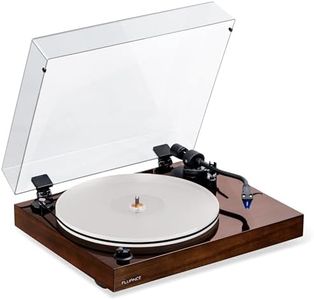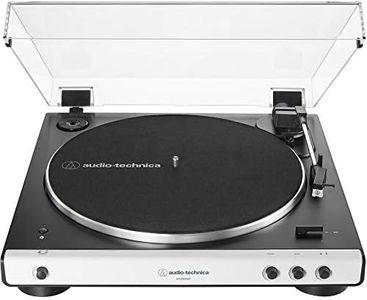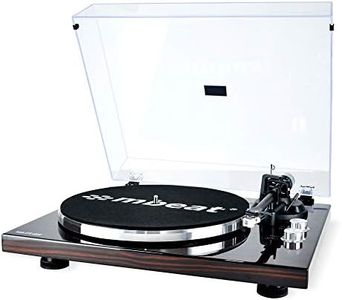We Use CookiesWe use cookies to enhance the security, performance,
functionality and for analytical and promotional activities. By continuing to browse this site you
are agreeing to our privacy policy
10 Best Vinyl Turntable
From leading brands and best sellers available on the web.By clicking on a link to a third party's website, log data is shared with that third party.
#5
mbeat
11%OFF
MB-PT-28 Bluetooth Hi-Fi Vinyl Turntable Record Player with 36W Bookshelf Speakers, Supports 33/45 RPM Vinyl Record, Bluetooth Streaming via Smart Devices, Pre-installed Hi Fidelity MMC Stylus, Solid Metal Platter, Removable Dust Cover and Adjustable Counterweight and Anti-skating weight, Including Feature-Rich Audio Outputs, Line-in Pre-amplifier, USB Recording Function
Buying Guide for the Best Vinyl Turntable
Choosing the right vinyl turntable is an exciting journey for music lovers, whether you're just getting into records or looking to upgrade your system. It's important to understand the features and specifications that will matter most for your use—some specs influence sound quality, while others impact how easy your listening sessions are. Instead of focusing on flashy features, think about your lifestyle: do you want something simple and automatic, or do you enjoy tweaking settings for a more hands-on experience? The following key specs will help guide your decision.Drive TypeThe drive type refers to how the platter is rotated: usually belt-drive or direct-drive. Belt-drive uses an elastic belt for smooth, quiet operation and is popular for home listening. Direct-drive spins the platter directly with a motor, offering quicker startup and greater durability, often favored by DJs. If you want pure listening joy and don’t need to move the turntable around, belt-drive is a solid pick. If you plan to DJ or need a tough, consistent machine for heavy use, direct-drive is your friend.
Manual vs. Automatic OperationThis refers to how you start and stop the record. Manual turntables require you to place the tonearm on the record yourself and lift it off when it’s done. With fully automatic models, you press a button and the turntable does the rest. Some offer semi-automatic operation, which might return the tonearm automatically after playing. If you enjoy the ritual of handling your gear, manual gives you more control. If you like convenience or have concerns about scratching records, automatic is great. Choose based on how involved you want to be in the playback process.
Phono Preamp (Built-in or External)A phono preamp boosts the very quiet signal from a turntable to a level that regular speakers and amps can use. Some turntables have a preamp built-in, allowing you to plug them straight into powered speakers or any audio system. Others require an external preamp. If you’re new to turntables and want simple setup, a built-in preamp is handy. If you already have an audio setup or want to upgrade your sound over time, an external preamp gives more flexibility.
Cartridge Type and UpgradeabilityThe cartridge is the part that holds the stylus (needle) and reads the grooves in your records. Some turntables have a fixed cartridge, while others let you swap them out. Good cartridges can improve sound, so if you want room to upgrade, check for a model with a removable headshell or easily changable cartridge. For basic listening, the included cartridge is usually fine, but audiophiles may want the option to upgrade.
Speeds SupportedVinyl records come in different sizes and speeds: mostly 33 1/3 RPM (LPs) and 45 RPM (singles), with some rare records at 78 RPM. Most modern turntables handle 33 and 45, but not all play 78s. If you plan to listen to vintage 78 RPM records, make sure the turntable supports that speed. For most users, 33 and 45 are enough.
Build Quality (Plinth and Platter)The plinth is the base, and the platter is the part where you place the record. Solid, heavy materials reduce vibration and improve sound. Look for a sturdy, well-damped plinth rather than thin plastic, and a heavier platter is usually better. If you're after better sound and durability, robust build matters. For casual play or portable use, lightweight models can be fine.
USB ConnectivityUSB-out lets you connect your turntable to a computer to digitize your vinyl collection. This is useful if you want to archive, listen on the go, or just enjoy digital backups. If you plan on converting your records, choose a model with USB. If you’re only interested in analog listening, you can skip this feature.
